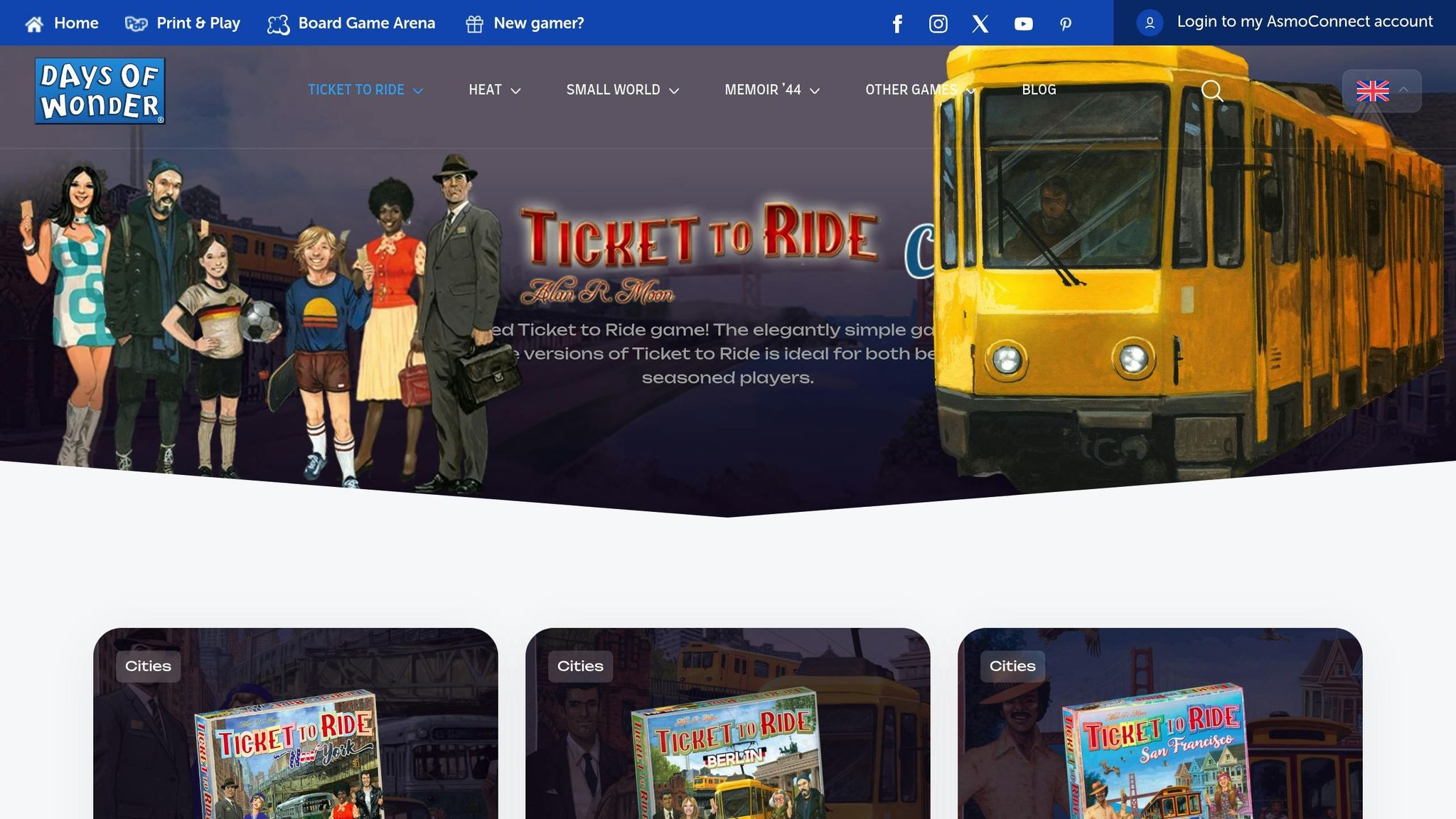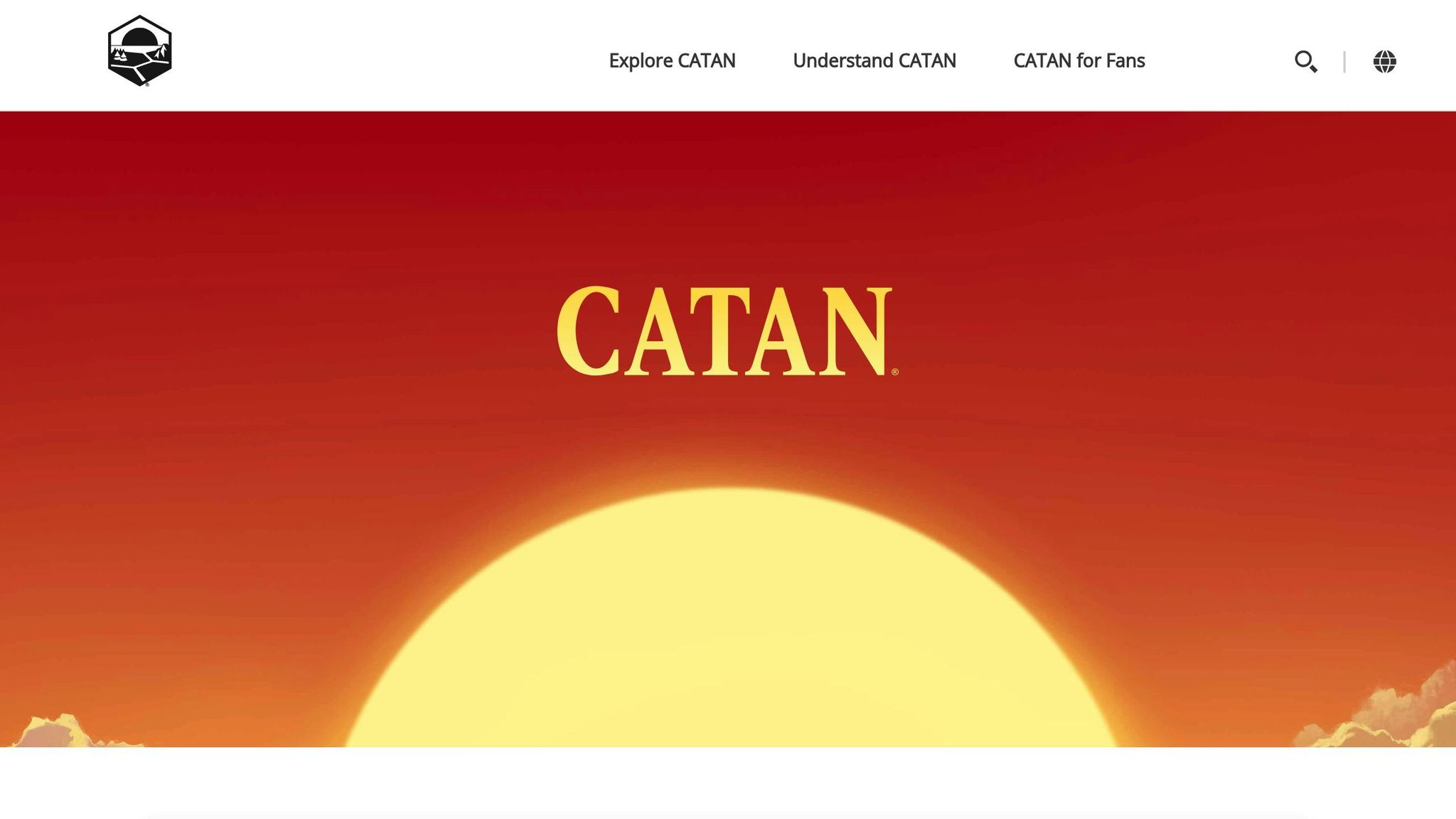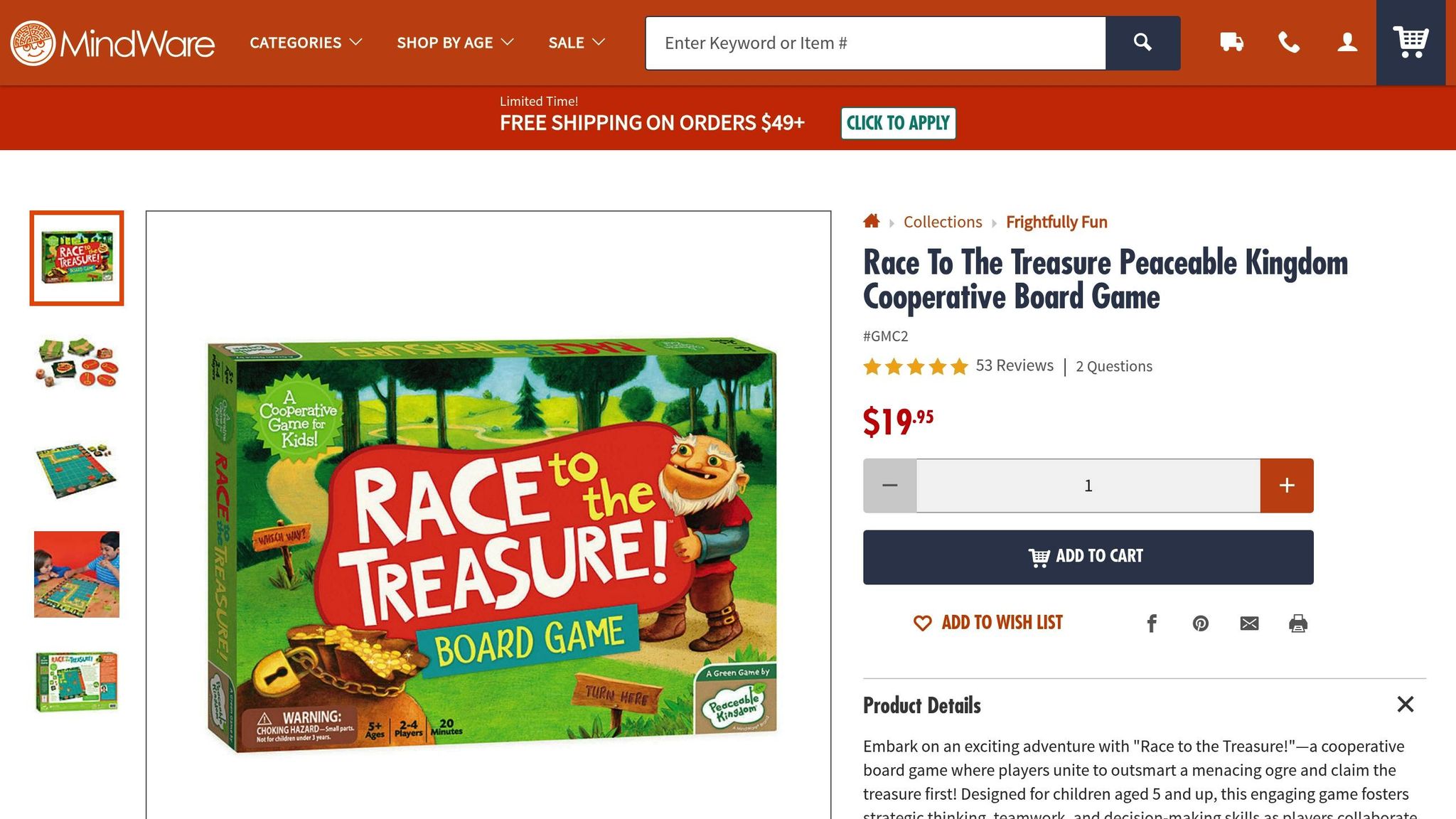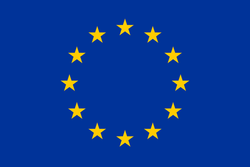Discover the Best Board Games for Every Player

Family Fun Unleashed: The Best Games for Bonding Night
Looking for ways to bring your family together without screens? Board games are a great solution. They encourage connection, improve communication, and create lasting memories. Whether you're into strategy, teamwork, or quick-thinking games, there's something for everyone. Here's a quick overview of six family-friendly games that can transform your game night:
- Ticket to Ride: A competitive train-building game for ages 8+. Teaches geography and strategic planning.
- Catan: A resource-trading game for ages 10+. Focuses on negotiation and decision-making.
- Disney: Eye Found It!: A cooperative hidden-object game for kids as young as 3. Encourages teamwork and observation.
- Hoot Owl Hoot!: A cooperative game for ages 4+. Simple and fun for younger players.
- Guess Who?: A deduction-based classic for ages 6+. Sharpens logic and communication.
- Race to the Treasure: A cooperative adventure for ages 5+. Great for teamwork and problem-solving.
Quick Comparison Table
| Game | Age Range | Players | Playtime | Type | Skills Developed |
|---|---|---|---|---|---|
| Ticket to Ride | 8+ | 2–5 | 60–90 min | Competitive | Planning, geography, resource use |
| Catan | 10+ | 3–4 | 60 min | Competitive | Negotiation, resource management |
| Disney: Eye Found It! | 3+ | 2–6 | 15–20 min | Cooperative | Observation, teamwork, pattern skills |
| Hoot Owl Hoot! | 4+ | 2–4 | 15 min | Cooperative | Strategy, social skills, colors |
| Guess Who? | 6+ | 2 | 20 min | Competitive | Logic, questioning, deduction |
| Race to the Treasure | 5+ | 2–4 | 20 min | Cooperative | Problem-solving, teamwork, decisions |
Each game offers a unique way to connect with family while building skills. Whether you prefer competition or collaboration, these options ensure a fun and meaningful experience for all ages.
Top 10 Family Board Games – 2024
1. Ticket to Ride

Ticket to Ride has cemented itself as one of the most cherished family board games, with an impressive 18 million copies sold around the globe. This railway-themed adventure transforms your dining room into a cross-country expedition, where players strategize to connect cities across North America through carefully planned train routes.
Designed by Alan R. Moon, the game is built on straightforward rules: on each turn, players can draw cards, claim routes, or collect destination tickets. This simplicity makes it easy for families to dive in, while the strategic depth keeps everyone engaged and eager for the next move.
One of the game’s standout features is how it turns family game night into an educational experience. Kids often learn about new cities and locations, sparking curiosity about geography and different parts of the world.
Recommended Age Range
The original Ticket to Ride is designed for players aged 8 and up. However, families often include younger children by tweaking the rules slightly. For those with kids under 8, Ticket to Ride: First Journey is an excellent alternative. This version, tailored for ages 6 and up, simplifies the gameplay while maintaining the excitement that makes the original so enjoyable.
Parents can also help younger kids by playing with open hands, allowing them to see all the cards. This small adjustment encourages active participation and helps bridge the age gap, ensuring everyone feels included in the fun.
Game Type (Competitive or Cooperative)
Ticket to Ride is a competitive game, but it’s designed to keep the competition lighthearted. Players aim to complete their routes and may occasionally block others, but the focus remains on enjoyment rather than rivalry.
The game strikes a great balance with moderate player interaction. Families compete for key routes while trying to anticipate each other’s moves, creating moments of suspense and excitement without the intensity of more confrontational games. This makes it a perfect choice for family-friendly play.
Skills Developed
Beyond the fun, Ticket to Ride helps players develop a range of valuable skills. It encourages strategic thinking, critical decision-making, and adaptability as players plan routes and tackle challenges. The game also promotes geography and spatial reasoning, helping players visualize connections across North America while learning about various cities and regions.
Perhaps most importantly, it fosters communication within families. As Isaac Cooper, a board game advocate, explains:
"Board games offer a dedicated space for family members to come together, interact, and engage in meaningful conversations. By playing board games regularly, families can create lasting memories and strengthen their bonds".
For families looking to add Ticket to Ride to their collection, or to explore its kid-friendly versions, visit Brain-Games.lv/en/. It’s a game that consistently earns praise for blending strategy, learning, and fun into one unforgettable experience.
2. Catan

While Ticket to Ride takes families on a journey across railway maps, Catan invites them to settle and negotiate on a dynamic island. This beloved family strategy game offers the perfect mix of simplicity and depth, turning any table into a bustling hub of roads, towns, and trading. Players compete to build their settlements while trading resources and striking deals, making every game a lively and interactive experience.
Catan’s modular board and focus on negotiation ensure that no two games feel the same. The balance between luck and strategy keeps players engaged, as every decision matters. Andy Chen from The Saratoga Falcon captures this dynamic perfectly:
"Catan mixes the exhilarating nature of Monopoly's random chance with a significant level of skill expression; every action has a tradeoff, as players must decide which subgoals they want to prioritize".
This combination of strategic planning and social interaction creates a game that’s as entertaining as it is thought-provoking.
Player Interaction
One of Catan’s standout features is how it encourages constant interaction between players. The trading system naturally sparks conversations, negotiations, and even a touch of playful scheming. Whether you’re bartering for that last piece of brick or trying to outmaneuver an opponent, the game brings even the quietest participants into the action. It’s a game where every player has a voice, ensuring no one feels left out.
Recommended Age Range
Catan is officially recommended for ages 8 and up, but there’s also Catan Junior for younger players aged 6–9. This version simplifies the rules while keeping the excitement alive, making it a great option for families with younger kids. With its pirate-themed twist and approachable gameplay, Catan Junior has won over parents and kids alike. In fact, with a little guidance, even 5-year-olds can grasp the basics and join the fun.
Game Type (Competitive or Cooperative)
Catan is a competitive game at heart, but its emphasis on negotiation creates opportunities for temporary alliances. Players work toward their individual goals while often relying on trades and deals with others. This balance between competition and collaboration keeps the gameplay dynamic, with alliances forming and shifting as the game unfolds.
Skills Developed
Catan isn’t just fun - it’s also a great way to build practical skills. The game encourages resource management, teaching players to plan carefully and make the most of limited assets. Negotiation is another key element, as players learn to communicate effectively, craft persuasive offers, and find win-win solutions. On top of that, the strategic decision-making involved sharpens problem-solving and adaptability. Lawrence Benjamin sums it up well:
"Settlers of Catan is a popular modern board game that combines elements of strategy, negotiation, and resource management".
For families eager to embark on this island adventure, Catan and its family-friendly editions are available at Brain-Games.lv/en/. It’s a game that consistently brings families together, creating memorable moments through shared challenges and triumphs.
3. Disney: Eye Found It!
For families with young kids, Disney: Eye Found It! mixes Disney’s enchanting worlds with cooperative gameplay to encourage teamwork. This hidden object board game takes the familiar "I Spy" concept to a whole new level with a six-foot board featuring 12 beautifully illustrated Disney scenes.
Unlike competitive games that can sometimes create stress, this game promotes a sense of unity. With over 1,000 items to discover, it offers endless opportunities for players to work together, uncovering hidden treasures.
Ali Mierzejewski, editor-in-chief at The Toy Insider, sums up the game’s charm:
"This is a great game because it promotes cooperation, observation skills, object identification, and matching skills. We had a blast playing it in our office. The familiar characters and beautiful gameboard make the game tons of fun. The game is designed for kids ages 5 and up, but it's fun and challenging for the entire family. Racing the clock to Cinderella's castle before midnight, players work together to win, so it makes the perfect game for a family game night or a sleepover with friends."
This cooperative gameplay creates an engaging and interactive experience for everyone involved.
Player Interaction
In Disney: Eye Found It!, players collaborate to locate matching items within a set timeframe, fostering clear communication and teamwork. Each successful find moves all players closer to their shared goal: reaching Cinderella’s castle before Maleficent’s staff advances to 16 [33, 31].
Recommended Age Range
The game is designed for kids as young as 4, but its vibrant visuals and familiar Disney characters make it appealing to players of all ages. One Amazon reviewer highlighted its universal appeal, saying it’s "great for all ages due to its balance of detail and noticeable objects".
Game Type (Cooperative)
This is a fully cooperative game, meaning players either win or lose together. By removing the competitive edge, it fosters a positive atmosphere where teamwork and problem-solving take center stage.
Skills Developed
Disney: Eye Found It! helps sharpen observation, memory, and focus as players scan intricate Disney scenes for hidden objects [34, 30]. For younger players, it’s a fun way to practice object identification and matching skills, while also learning the value of working together as a team.
With an impressive 4.7 out of 5 stars from over 5,500 Amazon reviews, Disney: Eye Found It! continues to create magical memories for families. If you’re looking to bring this cooperative adventure into your home, you can find it at Brain-Games.lv/en/, where Disney magic meets quality family time.
4. Hoot Owl Hoot!
Hoot Owl Hoot! is a charming cooperative game that brings families together as they work as a team to help baby owls return to their nest before sunrise. The game creates a shared experience where everyone wins - or loses - together, making it a perfect choice for family bonding.
The gameplay revolves around open cards, allowing all players to see and discuss their options collaboratively. This setup turns each turn into a group effort, where players collectively plan their moves and strategies.
One of the standout features is how players can move any owl during their turn, not just a specific one. This flexibility encourages teamwork and communication as families work together to create chains of matching-colored owls that leapfrog across the board.
Player Interaction
The cooperative nature of Hoot Owl Hoot! promotes clear communication and quick decision-making. Families strategize together, sharing ideas and taking turns, which helps to build empathy and strengthen bonds.
Recommended Age Range
Designed for children aged 4 and up, Hoot Owl Hoot! is perfect for families with kids at various developmental stages. The game offers two levels of difficulty, making it adaptable as children grow. Even younger players, like 3-year-olds, can enjoy the game with a little extra guidance.
Game Type (Cooperative)
As a cooperative game, it creates a stress-free environment where players work together rather than compete. This makes it especially appealing for mixed-age family game nights.
Skills Developed
Hoot Owl Hoot! helps players develop key skills such as strategy, turn-taking, and creative problem-solving. It also fosters emotional intelligence and shared decision-making. For older kids, the game introduces more complex strategies, offering opportunities to explore advanced combinations. As one reviewer, Leonid Mednikov, noted:
"For older children there is some room to find combinations and better strategies, something to think and talk about."
With a stellar 4.8 out of 5 stars from 3,992 Amazon ratings and accolades like the Dr. Toy 100 Best Children's Products Award and the Family Fun Magazine Toy of the Year Award, Hoot Owl Hoot! has earned its place as a family favorite. Bring this award-winning game to your next family game night by visiting Brain-Games.lv/en/.
sbb-itb-1ed942f
5. Guess Who?
Guess Who? turns question-asking into a fun, interactive game that brings families together through deduction and communication. Since its debut as "Wie is het?" in 1979, this timeless classic has entertained players of all ages.
The premise is simple: players ask yes-or-no questions to eliminate options and figure out their opponent's mystery character. This encourages strategic thinking and clear communication.
Player Interaction
One of the standout features of Guess Who? is how it encourages players to think critically and communicate effectively. By asking specific questions, players sharpen their vocabulary and categorization skills [47, 48]. The turn-based format fosters respectful interaction and active listening, while also promoting empathy as players consider how others might interpret various traits.
Recommended Age Range
Guess Who? is designed for players aged 6 and up, making it a great choice for families with school-age kids [49, 51]. For younger children, there’s a card game version for ages 5+, and a Junior edition tailored for kids as young as 3 [51, 52]. Parents can also tweak the rules - like replacing questions with descriptive statements - to make it easier for younger players to join in.
Game Type (Competitive)
At its core, Guess Who? is a competitive game that pits players head-to-head in an exciting challenge. Despite the competition, it maintains a lighthearted, family-friendly vibe that’s perfect for bonding.
Skills Developed
This game is more than just entertainment - it’s a tool for learning. Players develop deductive reasoning, logical thinking, memory, and facial recognition skills. It also nurtures creativity and active listening [46, 50].
Parents often highlight the educational benefits of Guess Who?. For example, Sara Blackburn shared:
"This classic game is perfect gift for 5-6 year old boys & girls! It is my go to for friend birthday parties."
Another parent, Britt Jacobson, added:
"A very fun game that teaches logic and verbal descriptions. It is fun for young and old."
With an impressive 4.7-star rating from 3,694 Amazon reviews, the Hasbro Gaming Guess Who? Card Game has earned praise for its portability, ease of play, and engaging design. Whether it’s the original board game or the card version, Guess Who? continues to combine fun with skill-building, making it a must-have for family game nights.
Ready to add this classic to your collection? Visit Brain-Games.lv/en/ and make your next family night one to remember!
6. Race to the Treasure

Race to the Treasure, created by Peaceable Kingdom, brings a cooperative twist to family game nights. In this award-winning adventure, players team up to build a path to a treasure while racing against an ogre determined to block their way. Instead of competing, everyone works together, making it a fantastic choice for families looking to bond over teamwork and shared victories.
Player Interaction
What sets Race to the Treasure apart is its focus on collaboration. Each turn sparks a quick group discussion about which path tile to place, encouraging players to strategize and problem-solve as a team. This shared decision-making fosters communication and creative thinking, transforming the game into a fun and engaging way to connect.
Recommended Age Range
Designed for players aged 5 and up, the game’s simple mechanics ensure that even younger children can join in the fun. Families frequently praise its appeal to a broad range of ages, making it a hit with both kids and adults.
Game Type (Cooperative)
This is a fully cooperative game where everyone works toward a common goal. Peaceable Kingdom’s design emphasizes inclusion and teamwork, ensuring no one feels left out.
"It's a game where everyone plays together, no one is left out, and everybody has fun!"
Victories are celebrated as a group, while challenges become opportunities to learn and grow together - an ideal setup for younger players who might otherwise fear losing.
Skills Developed
Race to the Treasure isn’t just entertaining - it’s also a great way to build important skills. Players practice strategic thinking as they plan the best path to avoid the ogre, enhance decision-making by weighing different options, and develop emotional intelligence through teamwork. The collaborative format also encourages creative problem-solving and shared responsibility.
"This game is played as a team rather than against opponents... Our family loves this game!"
With glowing reviews - 4.8 out of 5 stars from 3,125 Amazon ratings and 4.9 out of 5 stars from 53 MindWare reviews - it’s no surprise that Race to the Treasure has earned accolades like the Major Fun Award, Oppenheim Toy Portfolio Platinum Award, and the PAL Award. These shared challenges and triumphs make it a staple for family game nights.
Ready to strengthen your family’s teamwork and strategy skills? Add Race to the Treasure to your collection by visiting Brain-Games.lv/en/.
Game Comparison Chart
Compare key features of popular family games side by side to find the perfect fit for your next game night. This chart highlights six games, breaking down their core attributes to help you make an informed choice.
| Game | Age Range | Player Count | Playtime | Game Type | Skills Developed |
|---|---|---|---|---|---|
| Ticket to Ride | 8+ | 2–5 players | 60–90 minutes | Strategy/Collection | Strategic planning, route optimization, resource management |
| Catan | 10+ | 3–4 players | 60 minutes | Strategy/Trading | Negotiation, resource management, strategic thinking |
| Disney: Eye Found It! | 3+ | 2–6 players | 15–20 minutes | Cooperative/Search | Observation skills, teamwork, pattern recognition |
| Hoot Owl Hoot! | 4+ | 2–4 players | 15 minutes | Cooperative/Strategy | Simple strategy, social development, color recognition |
| Guess Who? | 6+ | 2 players | 20 minutes | Deduction | Logical reasoning, questioning skills, process of elimination |
| Race to the Treasure | 5+ | 2–4 players | 20 minutes | Cooperative/Adventure | Strategic thinking, decision-making, teamwork |
This handy chart helps you quickly identify which game aligns with your family’s preferences and dynamics.
Quick Selection Guide:
Here’s a closer look at what makes each game special, tailored to different age groups and interests:
-
Disney: Eye Found It! and Hoot Owl Hoot! are perfect for families with younger kids. These games encourage cooperative play, helping children work together while having fun. As Wirecutter editor Winnie Yang noted:
"It really feels like every part of this game helps toddlers learn something".
- Race to the Treasure and Guess Who? offer a mix of simplicity and engagement, making them enjoyable for both younger children and older family members.
- For families seeking more complex and strategic gameplay, Catan and Ticket to Ride provide opportunities for in-depth planning and decision-making.
Cooperative vs. Competitive Play:
Deciding between cooperative and competitive play can shape the tone of your family game night. Cooperative games are excellent for fostering teamwork and communication, especially for younger players still learning to navigate group dynamics. Gaming specialist Brian Mayer emphasizes:
"With younger kids you want a much simpler rule set because they aren't reading the rules, they're playing based on how they remember".
Looking to add one of these fantastic games to your collection? Check out the full selection at Brain-Games.lv/en/ and get ready to create memorable family moments!
Conclusion
Board games offer a refreshing way to foster genuine, face-to-face connections in a world dominated by screens. Studies have shown that setting aside time to play games together strengthens family communication and creates a deeper sense of togetherness. In this sense, board games become more than just entertainment - they're a way to reclaim meaningful family time.
The games highlighted in this guide each bring something special to the table. Whether it’s the cooperative teamwork in Disney: Eye Found It! or the strategic decision-making in Catan, each game provides a unique opportunity to enhance family connections. As Hammond Psychology & Associates aptly puts it:
"Physically sitting and interacting with family members helps you bond in a way that no amount of chatting online can."
Beyond the fun and laughter, these games teach valuable life skills like sportsmanship, problem-solving, and communication. They also give parents a chance to see their kids in new and surprising ways. Board games create a structured yet relaxed space where families can practice patience, celebrate wins, and support each other through losses.
Bringing together family members of all ages, board games are a simple yet powerful way to reconnect. Whether you're in the mood for a quick cooperative adventure or a more involved strategic challenge, there’s a game out there that’s perfect for your family. These shared experiences not only entertain but also lay the foundation for cherished family traditions.
Ready to transform your family nights? Visit Brain-Games.com or Brain-Games.lv/en/ to start building your collection. With a 2-week exchange guarantee and lifetime component replacement, you can shop with confidence and create lasting family memories.
Your next unforgettable family game night is just a roll of the dice away.
FAQs
How can I make games like Ticket to Ride and Catan more enjoyable for younger kids?
Making Games Like Ticket to Ride and Catan Kid-Friendly
If you want to introduce younger children to games like Ticket to Ride or Catan, tweaking the rules can make a big difference. For instance, you could shorten the route lengths, skip the use of destination tickets, or relax placement rules so settlements can sit next to each other without restrictions.
Adding visual aids is another great way to simplify things. Try using color-coded pieces or easy-to-read reference cards to guide them through the game. Also, keep gameplay sessions shorter to match their attention spans and ensure the experience stays fun and engaging. These small adjustments can turn these classic games into activities the whole family can enjoy together.
How do cooperative games like Disney: Eye Found It! and Hoot Owl Hoot! help kids build social skills?
Cooperative games like Disney: Eye Found It! and Hoot Owl Hoot! are excellent for helping kids build important social skills. These games encourage children to work together toward a common goal, teaching them the value of teamwork, clear communication, and the importance of taking turns. They also nurture empathy and kindness, as players need to consider each other's strategies and needs throughout the game.
On top of that, cooperative play creates a fun and low-stress setting where kids can practice problem-solving and resolving conflicts. This not only helps them become better collaborators but also boosts their confidence in social situations and promotes positive interactions with others.
Why are cooperative games a great choice for family game nights?
Cooperative games are a fantastic choice for family game nights because they bring everyone together to achieve a common goal. Unlike competitive games, these encourage teamwork, where players collaborate rather than compete, making the experience both fun and rewarding.
They’re also great for sharpening problem-solving skills and boosting emotional awareness. As family members work through challenges together, they learn to support each other and communicate more effectively. With the focus on shared victories instead of individual triumphs, these games create a welcoming environment that helps strengthen family connections.






